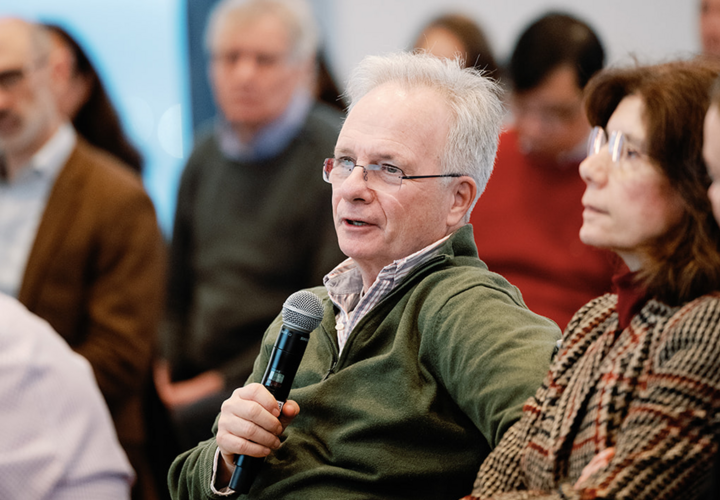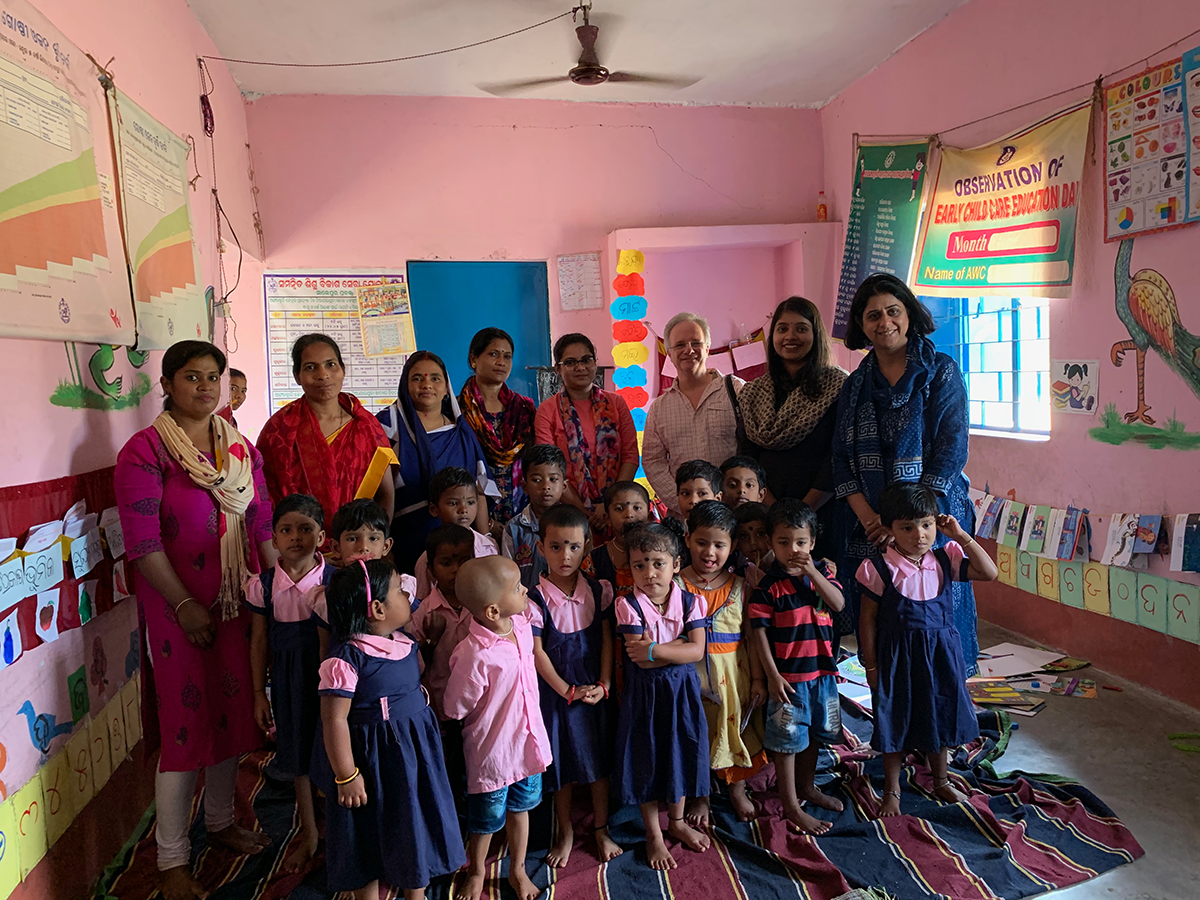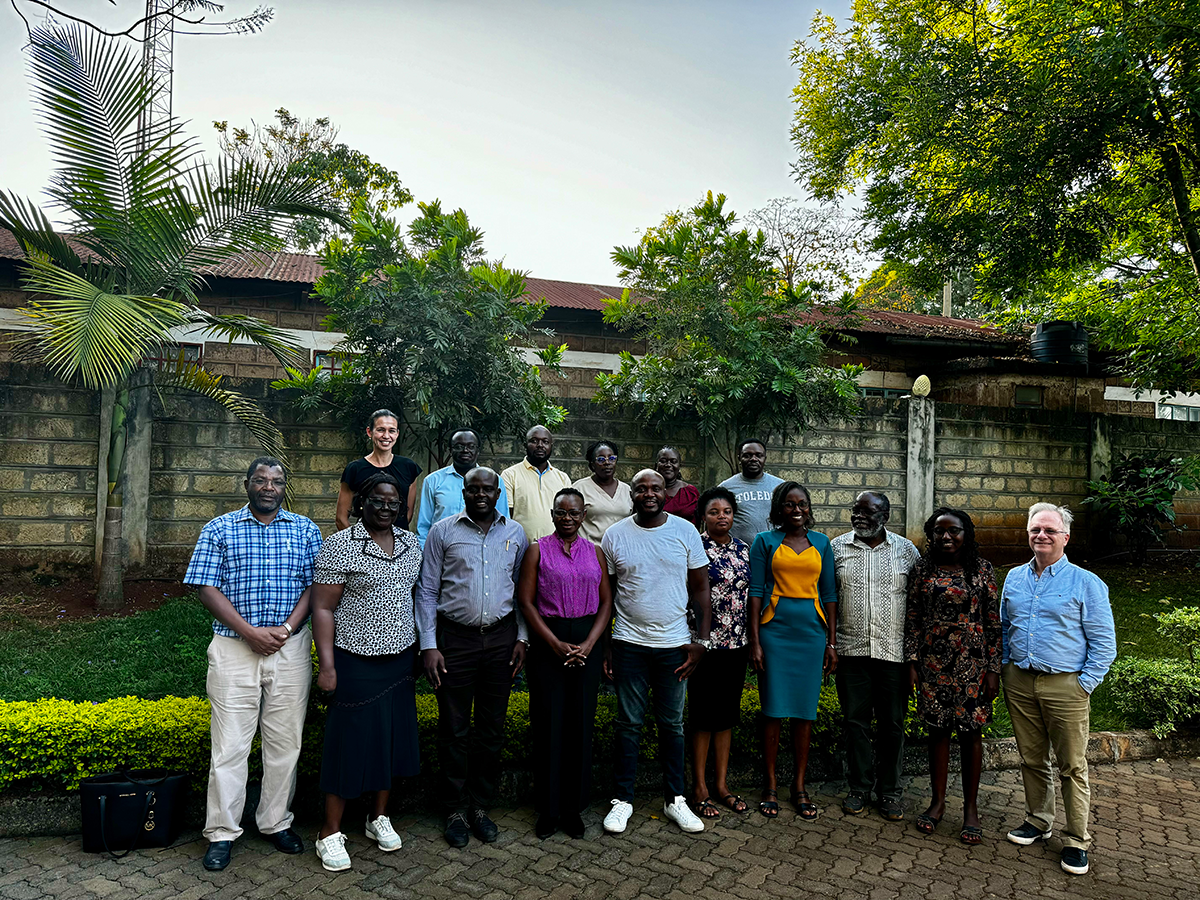Costas Meghir on the economics of early childhood development

by Megan Wright
Yale economist Costas Meghir says that his research revolves around the idea of individual potential. “The organizing concept of all my work is human capital – the set of skills people have, their health, and how that becomes the foundation of their standard of living,” Meghir said in a recent interview.
An estimated 250 million children under the age of five in low- and middle-income countries (LMICs) are at risk of failing to reach their developmental potential – many because they lack access to early cognitive and socio-emotional stimulation such as educational play and close interaction with educators. A growing body of evidence shows that psychosocial interventions can equip caregivers with structured, curriculum-based strategies to engage young children in responsive and developmentally supportive interactions. These programs can work, but questions remain about how to scale them to reach broad numbers of disadvantaged children, and whether their positive impacts endure to adulthood or fade over time.
Meghir, the Douglas A. Warner III Professor of Economics at Yale and affiliate of the Economic Growth Center (EGC) and Yale Inclusion Economics (YIE), is confronting these challenges directly. His research examines both the optimal timing of early childhood interventions and the mechanisms through which they can be scaled effectively to enhance long-term outcomes in cognition, educational attainment, and economic mobility.
Originally from Greece, Meghir pursued his PhD student at the University of Manchester in the UK. His early career was at a time when the American and later the British governments experimented with large-scale training programs – the Job Training Partnership Act and the UK New Deal – aimed at helping low-income and unemployed adults. But the evidence, including studies by Nobel laureate James Heckman, showed these programs had little impact. “All the analysis suggested that to make a real difference, you needed to intervene earlier in life,” he said.
That realization launched a research agenda focused on understanding just how early “earlier” should be. Meghir’s work in the UK, including with coauthors Pedro Carneiro and Matthias Parey, revealed the intergenerational effects of maternal education on child outcomes. His evaluation of the “Excellence in Cities” program – an effort to improve inner-city schools in the UK – showed the greatest gains came among students who already had stronger early outcomes. In other words: the stronger the early foundation, the better the results.

Costas Meghir on-site during his project in India.
Experiments on two continents
In 2007 Meghir began to collaborate with Sally Grantham-McGregor, a pioneer of early childhood development research. Grantham-McGregor’s research in 1970s Jamaica had shown that low-cost psychosocial stimulation could boost cognitive development in undernourished children.
Inspired by that model, Meghir, along with economist Orazio Attanasio (also now at Yale, and an EGC affiliate), launched a randomized early childhood intervention in central Colombia. They used the existing infrastructure of a government conditional cash transfer program to identify and train local women to deliver the curriculum – weekly visits that introduced books, puzzles, and games made from inexpensive materials, designed to build language and motor skills, as well as micronutrient supplements.
Initial results were promising: a follow-up at the end of the 18-month intervention showed significant impact on cognitive and language development and on the amount of time and effort parents devoted to interacting with their children. However, a second follow-up two years later showed that effects had faded. “Parental behavior regressed back to the control group,” Meghir explained.
Lessons on scalability from the Colombia program carried over to Meghir’s next major project: a similar intervention in the underserved urban areas in Cuttack, a city in the eastern Indian state of Odisha, from 2013–15. Meghir and Attanasio designed a multifaceted ECD program to test which delivery models would work best in that complex, resource-constrained setting – what Meghir calls a “dichotomous world,” where the urban/rural divide affects even people’s physical stature, with low-income, rural people more likely to suffer nutrition-related stunting. Around 400 children aged 10-20 months participated in a structured curriculum, based on Grantham-McGregor’s Reach Up and Learn model, where home visitors – all local women, most of whom had completed high school – demonstrated play activities using low-cost toys and books. “It’s not a subsidy program,” said Meghir. “We’re trying to change parental behavior towards kids.”
The success of this program – what Meghir calls a “pretty reasonable” improvement in cognition of .35 standard deviations – led into a five-year project in India funded by the U.S. National Institutes of Health (NIH) and the World Bank. While some mother/children pairs received home visits, an additional experimental group participated in group activities, delivering a similar curriculum. “The fascinating outcome from this study is that the groups did as well, or possibly better, than the home visits,” Meghir said. “We believe this is because the participating women acquired a social network in the group. In India, women typically move to their husband’s village after marriage, and tend to be quite isolated. So the groups offered the benefits of networking, and at a fraction of the cost home visits.”
A later re-randomization of the participating communities led to additional interventions within the infrastructure of India’s Integrated Child Development Services, or ICDS, which improved the quality of local Anganwadi daycare centers. The research was disrupted by the Covid-19 pandemic. “There were strong effects already at midline,” Meghir said, “but our endline survey fell right on March of 2020.” Results from a five-year follow-up survey will come later this year.
Projects in Kenya, Tanzania, and New Haven
In a new Kenya-based project implemented by EGC and YIE in collaboration with the County Government of Tharaka Nithi, Kenyatta University, Bangor University, the University of the West Indies, and the Kenya National Bureau of Statistics, with initial funding from the Gates Foundation, Meghir and coauthors are broadening the research focus to examine women’s outcomes. Does offering childcare increase women’s labor supply, and work as a possible pathway to empowerment? Meghir thinks that the right program structure can create a win-win situation. “Let’s not just leave kids in a room because we want their mother to work,” he said. “Let’s do a child development intervention at the same time. Give them enhanced preschool and give the mother the time to take part in income-generating work.” Preliminary results fully justify this win-win approach. This policy-focused research study has also now raised funding from the J-PAL Learning for All Initiative, the Institution for Social and Policy Studies at Yale University, and the Whitney and Betty MacMillan Center for International and Area Studies at Yale.

Professor Costas Meghir and YIE Managing Director Deanna Ford with project collaborators from Kenyatta University and Tharaka Nithi County government in Kenya.
In Tanzania and New Haven, Meghir, Attanasio, EGC visiting faculty Ingvild Almås (who is leading the project), and coauthors are recruiting women to participate in a program during pregnancy, to examine the relative impacts of unconditional cash transfers versus bundled parenting and development programs in the first two years of life of the child. The goal is to understand whether simply giving participants cash is more or less effective than structured intervention, when the costs are held constant.
A companion project based in New Haven with co-author Linda Mayes, Yale Professor of Child Psychiatry, Pediatrics, and Psychology and Director of the Yale Child Study Center, provides participants with an iPad and group behavioral therapy up until the child’s birth, then a version of the same curriculum invented by Grantham-McGregor, all delivered online. This project has endured the challenges of Covid-19. “In the post-pandemic environment, people in the US are hesitant to participate in research projects,” Meghir said. “I’ve dedicated many years to building this program, and I’m unsure where it will go next. There is clearly a need for more such research in the US context with its deep pockets of poverty, but the funding was always scarce and now it seems to be evaporating.”
“The ultimate egalitarian science”
Meghir says he was always motivated by issues of poverty and inequality, stemming from his years growing up in Greece. He was drawn to the way that economics took a long-term structural, rather than case-by-case, approach to social issues. “
“Economics is the ultimate egalitarian science, because it views all people in exactly the same way – just facing different constraints,” Meghir said. "We need to deal with the root causes of inequality and poverty, and to think about low-cost, sustainable, and socially acceptable ways of alleviating them. That’s my motivation.”